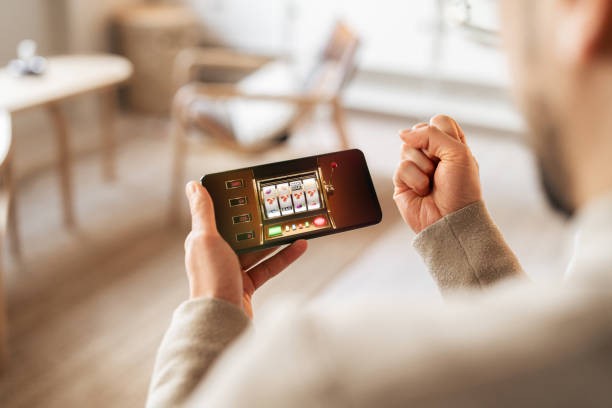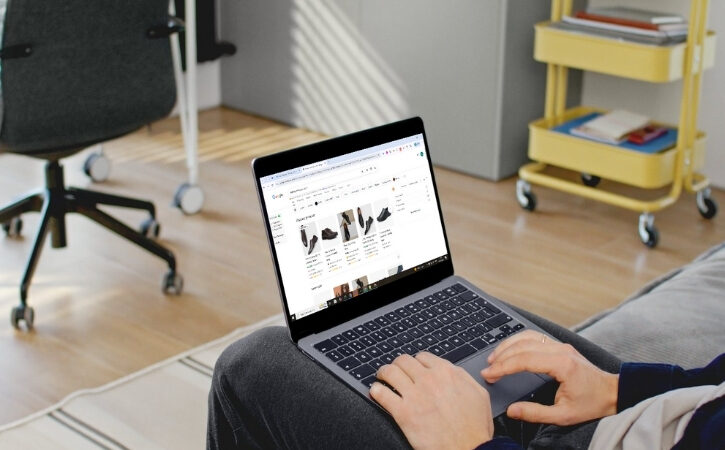How Does Spatial Orientation Affect Daily Activities?

Spatial orientation refers to the ability to understand and manipulate the position of objects in space and one’s own body in relation to them. It involves recognizing distances, angles, directions, and relationships between objects and individuals. This cognitive skill is crucial in various daily activities, influencing how we move, interact, and navigate the physical world. In this article, we will explore how spatial orientation affects our day-to-day life, from basic activities like walking and driving to more complex tasks such as playing sports or using technology.
The Basics of Spatial Orientation
To understand the impact of spatial orientation on daily activities, it is essential to first explore the basic mechanisms behind it. Spatial orientation is primarily controlled by the brain, specifically the parietal lobe, which processes sensory input and integrates it with visual and vestibular information (balance). It helps us comprehend where we are in relation to our surroundings and ensures that we can efficiently and safely interact with the world.
In simple terms, spatial orientation allows us to:
- Recognize our position in space.
- Determine the distance between ourselves and objects.
- Navigate our surroundings efficiently.
- Adjust our movements based on the environment.
These abilities are fundamental to performing a wide range of activities, making spatial orientation a key component in maintaining balance, coordination, and overall functionality in daily life.
The Role of Spatial Orientation in Walking and Movement
Walking is one of the most common activities affected by spatial orientation. When walking, our brain constantly calculates our position in relation to the ground, objects, and people around us. This involves processing visual information, balance signals from the inner ear, and feedback from muscles and joints.
Navigation in Unfamiliar Environments
In unfamiliar settings, spatial orientation becomes even more critical. Whether you’re walking through a new neighborhood or navigating a large shopping mall, your brain must analyze your surroundings, assess distances, and adjust your movements accordingly. Without a strong sense of spatial orientation, individuals may struggle to find their way, become disoriented, or have difficulty remembering their path.
Avoiding Obstacles
Avoiding obstacles while walking also relies heavily on spatial orientation. Our brain calculates the size, distance, and movement of obstacles in our path, enabling us to make quick decisions about how to avoid them. Poor spatial orientation can lead to clumsiness, an increased risk of falls, or accidents as a result of misjudging distances.
Driving and Spatial Orientation
Driving is another activity where spatial orientation plays a vital role. While operating a vehicle, drivers must be constantly aware of their surroundings, including the position of other vehicles, road signs, pedestrians, and the overall layout of the road. Spatial orientation helps drivers:
- Understand distances between vehicles.
- Judge their speed in relation to other cars.
- Navigate intersections and roundabouts.
- Park vehicles accurately in confined spaces.
Depth Perception and Lane Changes
Depth perception, a key aspect of spatial orientation, is crucial for safe lane changes and overtaking other vehicles. Drivers rely on their ability to accurately judge the distance between their car and others to execute these maneuvers safely. A poor sense of depth perception can lead to risky decisions on the road, such as merging too early or waiting too long to change lanes.
Spatial Awareness in Parking
Parking, particularly parallel parking, requires advanced spatial orientation. Drivers need to understand the size of their car, the available space, and the position of other vehicles to park successfully. Misjudging distances or angles can result in damage to the vehicle or nearby objects.
Sports and Spatial Orientation
Many sports require a high level of spatial orientation. Athletes often need to track moving objects, such as balls or opponents, while also moving themselves within the playing area. Spatial orientation is essential for:
- Coordinating movements in relation to the ball, opponents, and teammates.
- Anticipating the trajectory of moving objects.
- Maintaining balance and agility during dynamic movements.
Sports Involving Balls
Sports like basketball, soccer, and tennis rely heavily on spatial orientation. Players must understand the position of the ball, its speed, and its trajectory to react effectively. In basketball, for instance, players need to accurately judge the distance to the basket before taking a shot, while in soccer, players must anticipate the movement of the ball and position themselves to receive or intercept it.
Team Sports and Coordination
Team sports add an additional layer of complexity, as athletes must not only track objects but also be aware of their teammates’ and opponents’ positions. Good spatial orientation allows players to anticipate movements, pass the ball efficiently, and make strategic decisions during gameplay. Poor spatial orientation can result in missed passes, collisions with other players, or being caught out of position.
Indoor Activities and Spatial Orientation
Even indoor activities, such as cooking, cleaning, or arranging furniture, rely on spatial orientation. These tasks often require precise movements and an awareness of the surrounding space to avoid accidents or mishaps.
Cooking and Kitchen Safety
In the kitchen, spatial orientation helps individuals understand where utensils, appliances, and ingredients are located in relation to each other. This is especially important when handling hot surfaces, sharp objects, or heavy pots and pans. Misjudging distances can lead to burns, cuts, or spills. Additionally, spatial orientation plays a role in efficiently moving around the kitchen and organizing the workspace.
Cleaning and Home Maintenance
Cleaning tasks, such as vacuuming, dusting, or organizing items, also rely on spatial orientation. For instance, when vacuuming a room, individuals must understand how to navigate furniture and obstacles, while dusting requires a sense of how far one’s arm needs to reach. Similarly, home maintenance tasks like hanging pictures or assembling furniture require precise spatial judgment to ensure everything is correctly aligned.
The Impact of Spatial Orientation on Social Interactions
Social interactions are another area where spatial orientation comes into play, albeit in more subtle ways. Personal space, for example, is an important aspect of social interaction. Individuals rely on spatial orientation to judge how close they should stand to others, taking into account cultural norms, social cues, and the physical environment.
Non-Verbal Communication and Body Language
In addition to maintaining appropriate physical distance, spatial orientation also affects non-verbal communication, such as body language and gestures. Understanding how to position oneself during conversations or group interactions is a form of spatial awareness that enhances communication and fosters positive social connections. Poor spatial orientation may result in awkward positioning, which can lead to misunderstandings or discomfort in social situations.
Social Navigation in Crowded Spaces
Crowded spaces, such as busy streets, public transport, or events, require heightened spatial awareness. Navigating through a crowd involves calculating the speed and direction of other people, while adjusting one’s movements accordingly. Individuals with strong spatial orientation skills can easily maneuver through crowds, while those with weaker skills may struggle, leading to stress or anxiety in crowded environments.
Technology and Spatial Orientation
In today’s digital age, spatial orientation extends beyond physical spaces and has become relevant in the use of technology, particularly with the rise of virtual and augmented reality (VR and AR) applications. These technologies simulate physical environments, requiring users to navigate and interact with virtual spaces as they would in the real world.
Virtual Reality (VR) and Spatial Orientation
Virtual reality immerses users in a simulated environment, often requiring them to move and interact with virtual objects. Successful navigation in VR depends on the user’s ability to translate real-world spatial orientation skills into the virtual space. This includes judging distances, understanding object relationships, and coordinating movements.
Augmented Reality (AR) and Everyday Use
Augmented reality, which overlays digital information onto the physical world, also relies on spatial orientation. Applications like AR navigation systems or interior design apps require users to visualize virtual objects in their real surroundings. For example, AR apps that help people arrange furniture in their homes demand a strong sense of spatial orientation to ensure that virtual items fit correctly within the physical space.
Aging and Decline in Spatial Orientation
As people age, their spatial orientation abilities often decline. This can be due to a variety of factors, including changes in vision, balance, and cognitive processing. Age-related decline in spatial orientation can impact daily activities, making tasks such as driving, walking, or navigating new environments more challenging.
Fall Risk and Mobility
One of the most significant concerns for older adults with declining spatial orientation is an increased risk of falls. Falls are often caused by poor balance or misjudging distances, both of which are closely related to spatial orientation. Older individuals may struggle to navigate stairs, curbs, or uneven surfaces, increasing their likelihood of falling.
Adaptations and Interventions
To address the decline in spatial orientation, various interventions and adaptations can be implemented. These may include exercises to improve balance and coordination, modifications to living spaces (such as installing grab bars or improving lighting), and the use of assistive devices like canes or walkers. Cognitive training programs that focus on enhancing spatial orientation have also shown promise in helping older adults maintain their spatial awareness skills.
Conclusion
Spatial orientation is a fundamental cognitive skill that influences nearly every aspect of daily life. From walking and driving to playing sports and using technology, our ability to understand and navigate the world around us is deeply rooted in our sense of spatial orientation. Maintaining and improving this skill is crucial for safety, efficiency, and overall quality of life. Recognizing its importance and finding ways to strengthen spatial orientation can lead to better performance in everyday activities, as well as improved well-being, particularly as we age.



